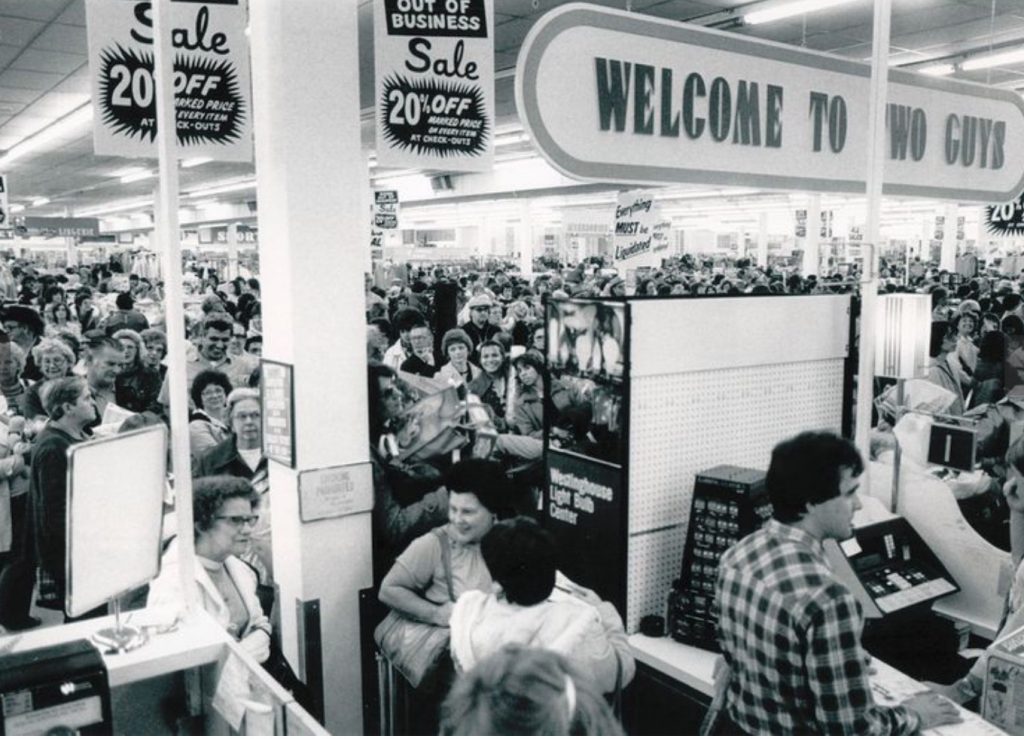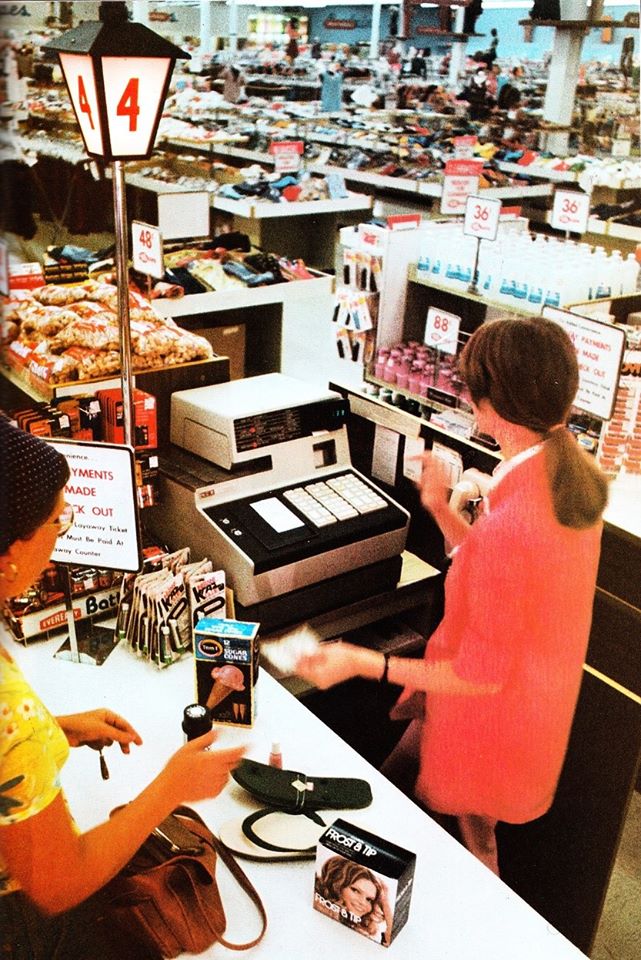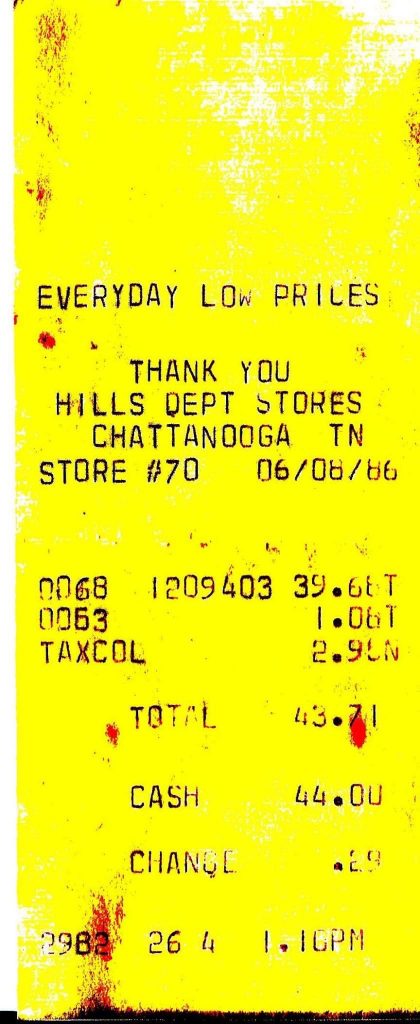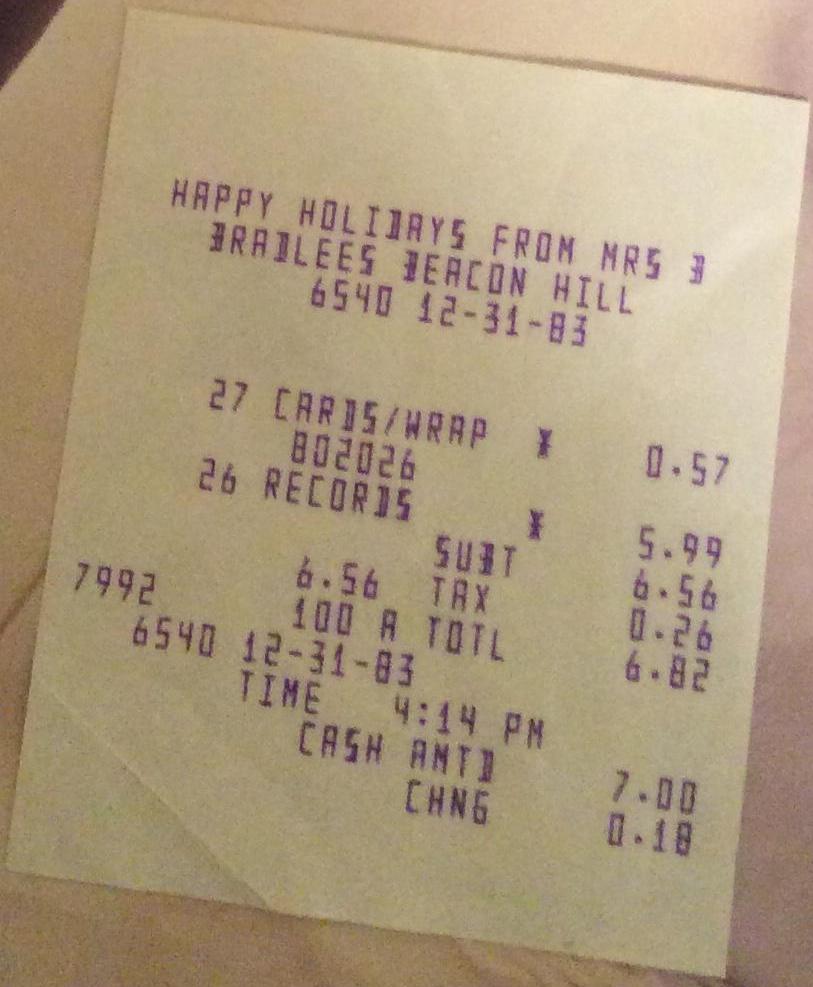
When my interest in cash registers became apparent to my mother and grandmother, they began purposely saving receipts so I could study them. If in attendance at the time of checkout I would associate the keystrokes I had observed the cashier doing on the cash register with the actions I saw printed on the receipt. Luckily, I have a very good memory and after one or two passes through a checkout I was able to memorize the layout of a cash register keyboard for that particular model in a particular store. As time goes on I can’t remember the keyboard layouts like I used to, but I do remember differences from store chain to chain and I mostly remember where the most important buttons (SKU, TOTAL, CASH TEND) were located.
I found the receipt shown above when doing some research on Bradlees back in the day. Being a native of Central New York, I wasn’t introduced to Bradlees until I moved to the greater Boston area in the latter half of the 1980s. However, when I saw this particular Bradlees receipt online I immediately knew what kind of cash register had generated the receipt, it was an electronic point of sale system by Sweda, the same system used by the nearby Two Guys when I was a kid.
Two Guys moved into the former W.T. Grants at the Northern Lights Shopping Center in North Syracuse, N.Y. in the mid 1970s. I remember it feeling like it was a big deal because the Grants building would no longer be empty and Two Guys was an up and coming department store chain from downstate and New Jersey.
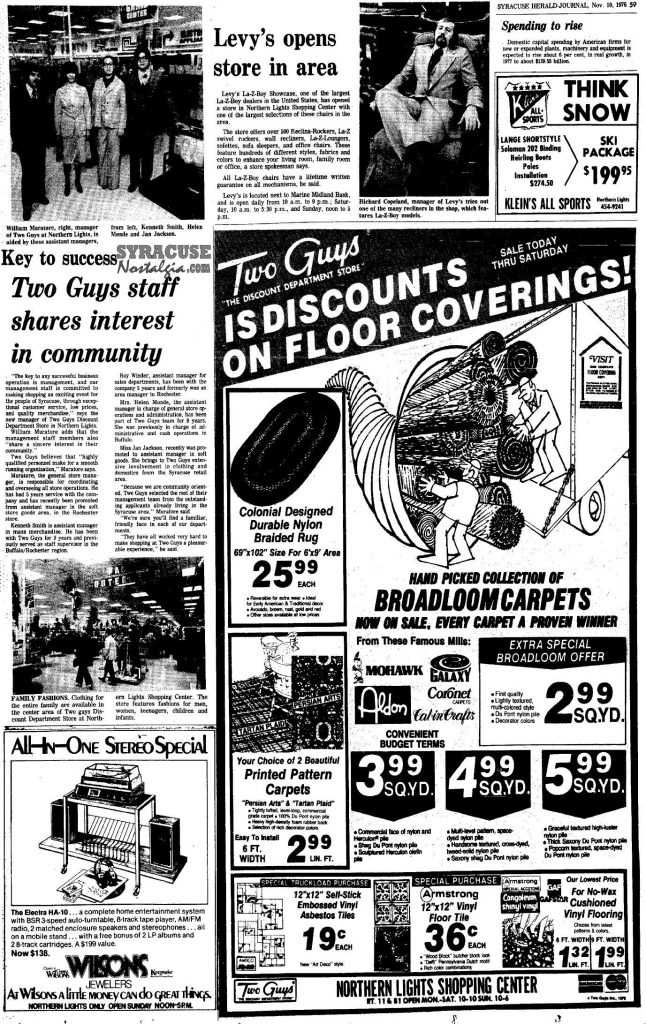
The distinct font found on the receipt generated by the Sweda POS system made it easy for me to identify which stores were using that system. Sweda was easy for me to remember, there were tons of Sweda mechanical cash registers in the various department store chains in the area. This was the first time I remember seeing an electronic Sweda cash register.
I don’t remember a lot outside of the distinctive print from the register. I have a hazy memory of the registers having two drawers and the Cash Tendered key being up in the upper left hand corner of the keyboard, one marked “A” and one below it marked “B”. As far as the accuracy of that hazy memory, well that’s anyone’s guess.
Sweda did not make a huge splash in the electronic cash register business and they were quite rare to find when visiting various stores. NCR, IBM, and Data Terminal Systems were all much more prevalent from my point of view in Upstate New York, however, I did encounter some Sweda scanning systems at Quality Markets in Western New York, though without the distinctive font shown on the receipt above. Shaw’s in Massachusetts also used Sweda scanning systems around the same time.
The only photo I’ve been able to find of one of these Sweda machines is shown in this photo from a Two Guys closing sale in 1980. If you look in the lower right hand corner of the photo you can see a Sweda cash register, the housing being rather distinctive and fitting the design language of standalone Sweda registers of the time.
